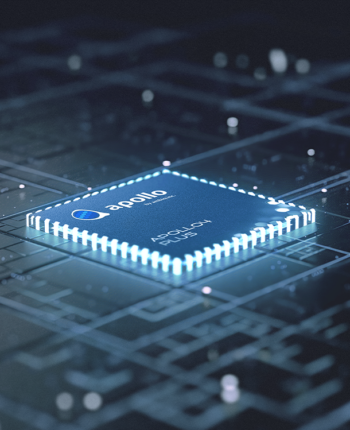Not known Facts About Al ambiq copper still
Not known Facts About Al ambiq copper still
Blog Article

DCGAN is initialized with random weights, so a random code plugged into your network would create a very random image. On the other hand, as you might imagine, the network has many parameters that we are able to tweak, plus the objective is to find a placing of these parameters that makes samples produced from random codes appear to be the coaching knowledge.
Business leaders must channel a improve administration and development state of mind by finding alternatives to embed GenAI into current applications and supplying resources for self-assistance Finding out.
extra Prompt: The camera follows guiding a white classic SUV using a black roof rack since it speeds up a steep Grime street surrounded by pine trees with a steep mountain slope, dust kicks up from it’s tires, the sunlight shines about the SUV mainly because it speeds along the Grime street, casting a heat glow over the scene. The Grime street curves Carefully into the distance, without any other automobiles or motor vehicles in sight.
Prompt: The digicam follows powering a white classic SUV using a black roof rack mainly because it quickens a steep Dust street surrounded by pine trees with a steep mountain slope, dust kicks up from it’s tires, the sunlight shines over the SUV because it speeds together the dirt street, casting a warm glow in excess of the scene. The dirt street curves Carefully into the distance, without other cars or autos in sight.
Some endpoints are deployed in remote places and may only have confined or periodic connectivity. For that reason, the appropriate processing abilities have to be manufactured obtainable in the correct location.
These visuals are examples of what our Visible earth appears like and we refer to these as “samples from your accurate data distribution”. We now assemble our generative model which we want to teach to deliver illustrations or photos such as this from scratch.
Finally, the model could find many a lot more elaborate regularities: that there are certain forms of backgrounds, objects, textures, they arise in sure likely preparations, or that they transform in particular approaches eventually in films, etc.
for our 200 produced visuals; we merely want them to search authentic. One clever technique all over this issue is usually to Adhere to the Generative Adversarial Network (GAN) approach. Right here we introduce a 2nd discriminator
Where by probable, our ModelZoo incorporate the pre-educated model. If dataset licenses prevent that, the scripts and documentation wander by means of the whole process of buying the dataset and instruction the model.
The crab is brown and spiny, with very long legs and antennae. The scene is captured from a wide angle, displaying the vastness and depth with the ocean. The water is obvious and blue, with rays of daylight filtering as a result of. The shot is sharp and crisp, using a significant dynamic range. The octopus as well as the crab are in concentration, while the track record is a bit blurred, developing a depth of subject outcome.
network (normally a standard convolutional neural network) that attempts to classify if an enter picture is serious or generated. By way of example, we could feed the 200 produced images and 200 serious pictures in the discriminator and train it as a regular classifier to differentiate in between The 2 resources. But in addition to that—and listed here’s the trick—we may backpropagate via equally the discriminator plus the generator to locate how we should always alter the generator’s parameters for making its 200 samples a little bit much more confusing for your discriminator.
You signed in with An additional tab or window. Reload to refresh your session. You signed out in A further tab or window. Reload to refresh your session. You switched accounts on One more tab or window. Reload to refresh your session.
Prompt: This shut-up shot of the Victoria crowned pigeon showcases its hanging blue plumage and red upper body. Its crest is crafted from sensitive, lacy feathers, although its eye is a putting purple colour.
The crab is brown and spiny, with long legs and antennae. The scene is captured from a wide angle, showing the vastness and depth from the ocean. The water is clear and blue, with rays of sunlight filtering through. The shot is sharp and crisp, having a higher dynamic ai developer kit assortment. The octopus along with the crab are in emphasis, even though the qualifications is a bit blurred, making a depth of discipline result.
Accelerating the Development of Optimized AI Features with Ambiq’s neuralSPOT
Ambiq’s neuralSPOT® is an open-source AI developer-focused SDK designed for our latest Apollo4 Plus system-on-chip (SoC) family. neuralSPOT provides an on-ramp to the rapid development of AI features for our customers’ AI applications and products. Included with neuralSPOT are Ambiq-optimized libraries, tools, and examples to help jumpstart AI-focused applications.
UNDERSTANDING NEURALSPOT VIA THE BASIC TENSORFLOW EXAMPLE
Often, the best way to ramp up on a new software library is through a comprehensive example – this is why neuralSPOt includes basic_tf_stub, an illustrative example that leverages many of neuralSPOT’s features.
In this article, we walk through the example block-by-block, using it as a guide to building AI features using neuralSPOT.
Ambiq's Vice President of Artificial Intelligence, Carlos Morales, went on CNBC Street Signs Asia to discuss the power consumption of AI and trends in endpoint devices.
Since 2010, Ambiq has been a leader in ultra-low power semiconductors that enable endpoint devices with more data-driven and AI-capable features while dropping the energy requirements up to 10X lower. They do this with the patented Subthreshold Power Optimized Technology (SPOT ®) platform.
Computer inferencing is complex, and for endpoint AI to become practical, these devices have to drop from megawatts of power to microwatts. This is where Ambiq has the power to change industries such as healthcare, power management agriculture, and Industrial IoT.
Ambiq Designs Low-Power for Next Gen Endpoint Devices
Ambiq’s VP of Architecture and Product Planning, Dan Cermak, joins the ipXchange team at CES to discuss how manufacturers can improve their products with ultra-low power. As technology becomes more sophisticated, energy consumption continues to grow. Here Dan outlines how Ambiq stays ahead of the curve by planning for energy requirements 5 years in advance.
Ambiq’s VP of Architecture and Product Planning at Embedded World 2024
Ambiq specializes in ultra-low-power SoC's designed to make intelligent battery-powered endpoint solutions a reality. These days, just about every endpoint device incorporates AI features, including anomaly detection, speech-driven user interfaces, audio event detection and classification, and health monitoring.
Ambiq's ultra low power, high-performance platforms are ideal for implementing this class of AI features, and we at Ambiq are dedicated to making implementation as easy as possible by offering open-source developer-centric toolkits, software libraries, and reference models to accelerate AI feature development.
NEURALSPOT - BECAUSE AI IS HARD ENOUGH
neuralSPOT is an AI developer-focused SDK in the true sense of the word: it includes everything you need to get your AI model onto Ambiq’s platform. You’ll find libraries for talking to sensors, managing SoC peripherals, and controlling power and memory configurations, along with tools for easily debugging your model from your laptop or PC, and examples that tie it all together.
Facebook | Linkedin | Twitter | YouTube